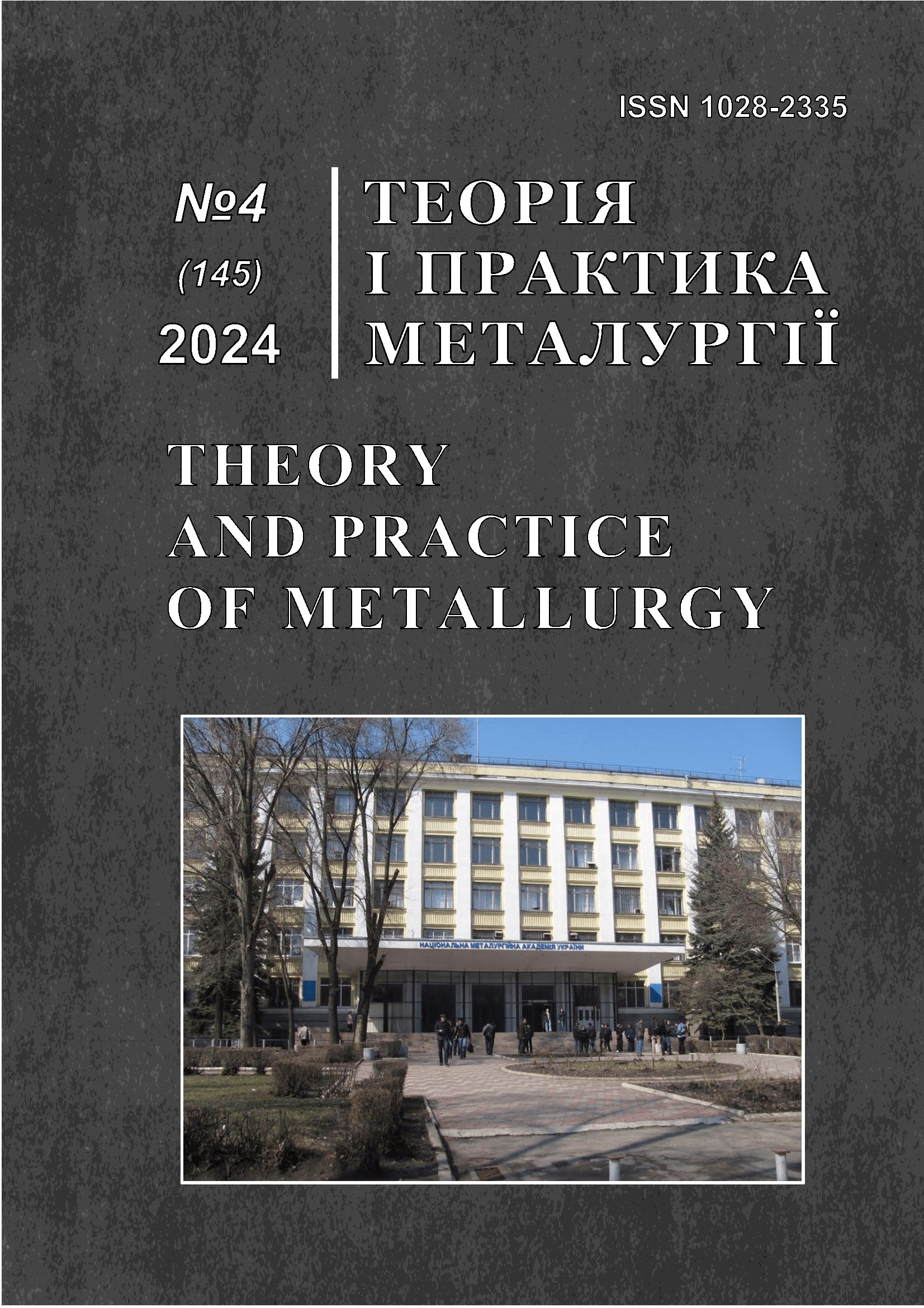The problem of constitution of flooring at the bottom of the ore furnace during ferosilicomanganese vibration: analysis of physical and mechanical controls
DOI:
https://doi.org/10.15802/tpm.4.2024.04Keywords:
ore-reducing furnace, ferrosilicon manganese, flooring, silicon carbide, physical and mechanical propertiesAbstract
Objective. At the Nikopol Ferroalloy Plant, during the shutdown of the RPZ-63 ore-reducing furnace for major repairs, its cooling and removal of the loose charge mixture from the upper horizons of the smelting space, a lining characterized by high strength, density, and crystalline structure was discovered. The difficulties that arose during the destruction of the lining and its removal from the furnace during the shutdown for major repairs were observed for the first time in decades of manganese ferroalloy production. The main reason for the formation of the refractory lining and its build-up on the furnace bottom is the "torn" operating mode caused by the transfer of furnaces to work according to the zone tariff and, apparently, a reduction in the operating time of furnaces for smelting ferromanganese, which contributes to the destruction of carbides and the washing of the furnace bath. Methodology. The paper presents studies to determine the fineness, strength, specific work of destruction, as well as the volumetric, true, bulk density of the furnace deck and some manganese ores, and studies of the porosity of these materials. Scientific novelty. Chemical analysis of the debris samples collected in different places of the deck and at different horizons showed that they are all mainly represented by a slag-metal conglomerate containing silicon carbide (SiC), reduced Mn, Fe, Si, P, Ti, S; the slag component is represented by oxides of CaO, MgO, Al2O3 and R2O. Some samples contain from 0.8 to 6.5% Pb. Practical significance. The paper presents data on the study of the physical and mechanical properties of the debris samples collected in different places of the deck and at the furnace horizons. Studies of the physical and mechanical properties of the scraps have shown their high strength characteristics, which are 2-18 times higher than those of manganese ore, which causes significant difficulties in their destruction in the solid state and extraction from the RTP bath when it is stopped for major repairs.
References
State Standard of Ukraine 3207-95. (2000). Rudy zalizni i marhantsevi, kontsentraty, ahlomeraty i okatky. Metod vyznachennia diisnoi, obiemnoi, nasypnoi shchilnosti i porystosti. Na zaminu State Standard 25732-88. UkrNDNTS
Adrianov, B. I. (1982). Metody opredeleniia strukturno-mekhanicheskikh kharakteristik poroshkoobraznykh materialov. Khimiia
Chapovskii, E. G. (1975). Inzhenernaia geologiia. Vysshaia shkola
Papushyn, Yu. L., Smyrnov, V. O., & Biletskyi, V. S. (2006). Doslidzhennia korysnykh kopalyn na zbahachuvanist. Skhidnyi vydavnychyi dim. https://surl.li/jcvncw
Pysarenko, H. S., Kvitka, O. L., Umanskyi, E. S (1993). Opir materialiv.. Vyshcha shkola
Ignatova, A. M., Artemov, A. O., Ignatov, M. N. (2013). Issledovanie pulestoikosti sinteticheskikh mineralnykh splavov. Fundamentalnye issledovaniia, (10-2), 261-265
Downloads
Published
How to Cite
Issue
Section
License
Copyright (c) 2024 Ruban A.V., Nadtochii A.A., Babutskyi V.I., Zinchenko O.M., Malyi E.D., Komar A.S.

This work is licensed under a Creative Commons Attribution 4.0 International License.
Authors retain copyright of the published papers and grant to the publisher the non-exclusive right to publish the article, to be cited as its original publisher in case of reuse, and to distribute it in all forms and media. Articles will be distributed under the Creative Commons Attribution 4.0 International (CC BY 4.0) licence.
Authors can enter the separate, additional contractual arrangements for non-exclusive distribution of the published paper (e.g., post it to an institutional repository or publish it in a book), with an acknowledgement of its initial publication in this journal.




